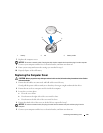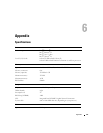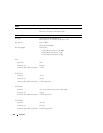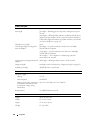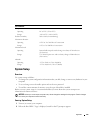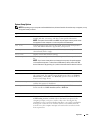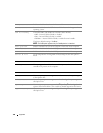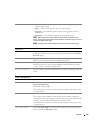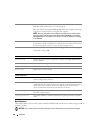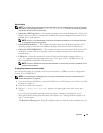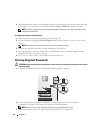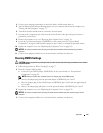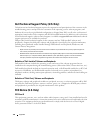
Appendix 127
System Setup Options
NOTE: Depending on your computer and installed devices, the items listed in this section may not appear, or may
not appear exactly as listed.
System
System Info Lists system information such as the computer name, the BIOS version
number and date, system tags, and other system-specific information.
NOTE: The system name listed in the BIOS may not appear exactly as the name
that appears on the computer or in the computer’s documentation.
CPU Info Lists the processor type, processor bus speed, processor ID, clock speed, L2
cache, and additional features supported by your processor.
Memory Info Indicates the type and amount of installed memory, memory speed and
channel mode (dual or single).
Date/Time Displays current date and time settings.
Boot Sequence The computer attempts to boot from the sequence of devices specified in this
list.
NOTE: If you insert a boot device and restart the computer, this option appears
in the system setup menu. To boot from a USB memory device, select the USB
device and move it (by pressing <U>) so that it becomes the first device in the list.
Drives
Diskette Drive Identifies and defines the floppy drive attached to the FLOPPY connector on
the system board. The options restrict identification of drives to USB only,
Internal only, or none (Off). The Read Only option restricts the ability to
boot from any floppy device.
SATA 0 through 5 Identifies the drives attached to the SATA connectors on the system board,
and lists the capacity for hard drives.
SATA Operation Identifies and defines the SATA controller settings for RAID. You can set the
SATA controller to RAID Autodetect/ATA or RAID On.
Onboard Devices
Integrated NIC You can set the NIC to On (default), Off, or On w/PXE. When the On
w/PXE setting is active (available only for the future boot process), the
computer prompts you to press <Ctrl><Alt><b>. Pressing this key
combination causes a menu to display that allows you to select a method for
booting from a network server. If a boot routine is not available from the
network server, the computer attempts to boot from the next device in the
boot sequence list.



